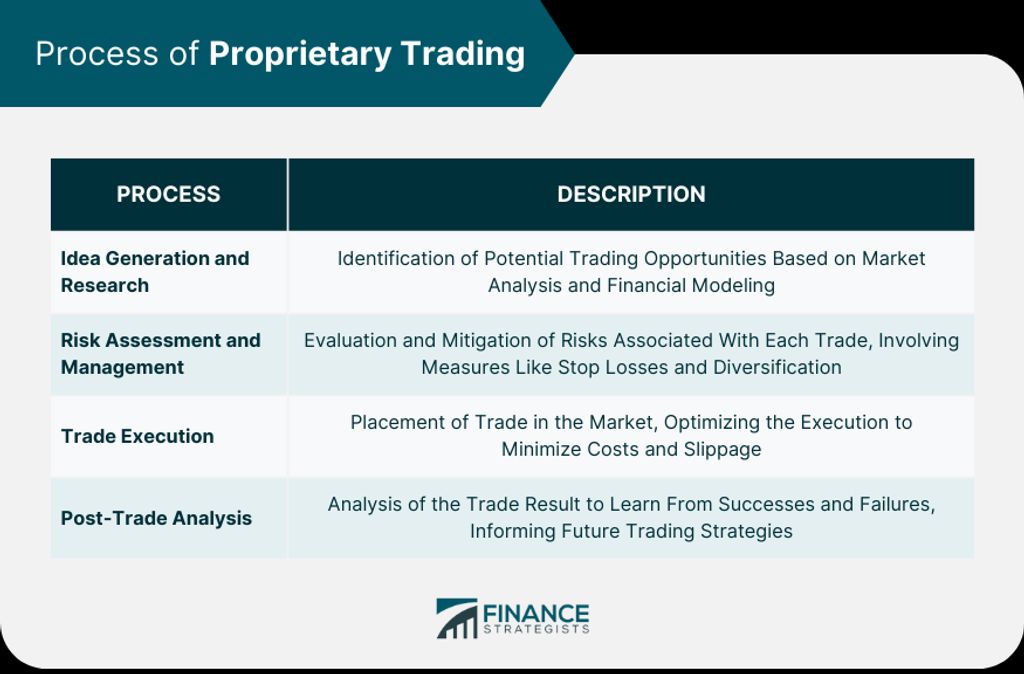Corporate finance plays a crucial role in the success of a business by optimizing financial resources and shaping decision-making. In this article, we will explore various strategies and principles of corporate finance that can contribute to a thriving business. From understanding key financial metrics to effective cash flow management, we will delve into topics such as developing a solid financial strategy, capital budgeting, financial forecasting, and performance evaluation. By implementing these strategies, businesses can enhance their financial health and make informed investment decisions. Let’s dive into the key takeaways from each section.
Key Takeaways
- Corporate finance is essential for optimizing financial resources and shaping decision-making in a business.
- Key financial metrics, such as revenue, expenses, and profitability, should be tracked to assess the financial health of a business.
- Developing a long-term financial plan and optimizing capital structure are vital for sustainable growth.
- Effective cash flow management involves strategies to improve cash flow and efficiently manage working capital.
- Capital budgeting helps evaluate investment opportunities and measure the return on investment.
Understanding the Importance of Corporate Finance

The Role of Corporate Finance in Business Success
Corporate Finance serves as the backbone of business decision-making, encompassing a range of strategies aimed at optimizing financial resources. Examining practical Corporate Finance Examples provides insights into how these principles shape the financial landscape of organizations.
Capital Budgeting:
Example: Tech Company’s R&D Investment
A technology firm faces a crucial decision on startup’s venture capital funding. For startups, equity financing is often a primary source of capital. A tech startup, for instance, secures funding from venture capitalists in exchange for equity. This Corporate Finance Example highlights how equity financing supports innovation and business development, albeit with a dilution of ownership.
Mergers and Acquisitions (M&A):
Example: Telecom Company’s Acquisition
A telecommunications company strategically acquires a smaller competitor to consolidate market share. Mergers and Acquisitions in Corporate Finance aim to enhance synergies and maximizing profitability.
Debt Financing:
Example: Manufacturing Company’s Bond Issuance
A manufacturing company explores debt financing by issuing bonds to raise capital for expanding production facilities. By opting for debt, the company leverages external funds while maintaining ownership control. This Corporate Finance Example demonstrates how businesses strategically use debt to fuel growth initiatives.
Equity Financing:
Example: Startup’s Venture Capital Funding
For startups, equity financing is often a primary source of capital. A tech startup, for instance, secures stronger and more resilient than ever.
Tip: Have A Clear Understanding Of Your Venture’s Financial Picture
Lead with a clear understanding of your venture’s financial picture. It’s essential to know your margins and key drivers of revenue and expense in the profit and loss. The financial story can describe an entrepreneur’s vision and give investors confidence in the leader’s ability to manage competing demands. Highlight the investment’s impact on the market and customers or its Social Return on Investment.
Tip: Safeguard Your Financial Control
Financial control is everything in business, and rising entrepreneurs must safeguard their position in this regard. If you invite investment early on, there is a risk of diluting that control. By
Key Financial Metrics Every Business Should Track
Tracking key financial metrics is essential for businesses to monitor their financial performance and ensure they are on track to achieve their business goals. These metrics provide valuable insights into the company’s financial health and help identify areas that require improvement. Some important financial metrics that businesses should track include:
- Revenue growth: This metric measures the increase in a company’s revenue over a specific period of time. It indicates the company’s ability to generate sales and attract customers.
- Profit margin: Profit margin is the percentage of revenue that remains as profit after deducting expenses. It reflects the company’s efficiency in managing costs and generating profits.
- Cash flow: Cash flow measures the amount of cash coming in and going out of the business. It is crucial for businesses to maintain a positive cash flow to meet their financial obligations and fund future growth.
Tracking these metrics allows businesses to make informed decisions and take corrective actions to achieve their business goals. By regularly monitoring and analyzing these metrics, businesses can identify trends, spot potential issues, and make strategic adjustments to ensure long-term success.
How Corporate Finance Impacts Decision Making
Corporate finance plays a crucial role in shaping the financial landscape of organizations. It encompasses a range of strategies aimed at optimizing financial resources and ensuring long-term profitability. By evaluating potential returns and risks, corporate finance helps businesses make informed investment decisions. For example, a technology firm facing a decision on whether to invest in research and development for a new product can use capital budgeting to assess the potential return on investment. This involves considering factors like development costs, expected market demand, and future profitability. Through effective corporate finance strategies, businesses can align their financial decisions with their overall goals and maximize their chances of success.
Developing a Solid Financial Strategy

Identifying and Assessing Financial Risks
Risk through Scenario Analysis: Understanding the full spectrum of potential outcomes is key to effective risk management. Scenario analysis helps businesses identify potential risks and assess their impact, allowing for the development of strategies to mitigate these risks proactively. This practice not only helps in managing current risks but also in preparing for future uncertainties, ensuring the business remains stable and can navigate through turbulent times.
Anticipating Management Reporting Changes: In a rapidly evolving business environment, FP&A must remain adaptable, stronger, and more resilient than ever. It is important to anticipate management reporting changes and stay ahead of the curve to effectively manage financial risks.
Have A Clear Understanding Of Your Venture’s Financial Picture: Lead with a clear understanding of your venture’s financial picture. It’s essential to know your margins and key drivers of revenue and expense in the profit and loss. The financial story can describe an entrepreneur’s vision and give investors confidence in the leader’s ability to manage competing demands. Highlight the investment’s impact on the market and customers or its Social Return on Investment.
Take The Necessary Steps To Invest In Your Vision: Financial control is everything in business, and rising entrepreneurs must safeguard their position in this regard. If you invite investment early on, there is a risk of diluting that control. By bootstrapping your startup, you are only answerable to yourself. Businesses tend to go under early because they run out of cash quickly, so financial leaders must pay strong attention to the numbers.
Prioritize Continuous Learning And Adaptation: One tip for rising entrepreneurs and financial leaders in the industry is to prioritize continuous learning and adaptation. The business landscape is constantly evolving, and staying updated with the latest financial strategies and industry trends is crucial for identifying and mitigating financial risks.
Safeguard Your Financial Control: Financial control is everything in business, and rising entrepreneurs must safeguard their position in this regard. If you invite investment early on, there is a risk of diluting that control. By prioritizing financial control and making informed decisions, entrepreneurs can protect their business from unnecessary risks and maintain stability even in challenging times.
Creating a Long-Term Financial Plan
Creating a long-term financial plan is crucial for the success and sustainability of any business. It involves setting clear financial goals and developing strategies to achieve them. A well-designed plan aligns financial decisions with the overall objectives of the organization, ensuring that every action contributes directly to the company’s growth and profitability.
One important aspect of creating a long-term financial plan is projections. By forecasting future financial performance, businesses can anticipate potential challenges and opportunities, allowing them to make informed decisions. Projections provide a roadmap for the company’s financial journey, helping to identify areas of improvement and allocate resources effectively.
In addition to projections, it is essential to consider various factors when developing a long-term financial plan. These factors include market conditions, industry trends, and the company’s competitive landscape. By analyzing these factors, businesses can adapt their strategies and make necessary adjustments to stay ahead in the market.
To ensure the success of a long-term financial plan, it is crucial to regularly review and update it. As the business landscape evolves, goals and priorities may change, requiring adjustments to the plan. By regularly monitoring and evaluating the plan’s effectiveness, businesses can stay on track and make proactive decisions to achieve their long-term objectives.
In summary, creating a long-term financial plan is a strategic process that involves setting clear goals, making accurate projections, and adapting to changing market conditions. It provides a roadmap for financial success and helps businesses navigate challenges and seize opportunities along the way.
Optimizing Capital Structure for Growth
Optimizing the capital structure is a critical step for businesses looking to fuel their growth initiatives. By carefully balancing debt and equity financing, companies can maximize their financial resources and position themselves for long-term success. Debt financing allows businesses to leverage external funds while maintaining ownership control. For example, a manufacturing company may issue bonds to raise capital for expanding production facilities. On the other hand, equity financing is often a primary source of capital for startups. By securing funding from venture capitalists in exchange for equity, startups can support innovation and business development. It’s important to note that equity financing may result in a dilution of ownership.
To optimize capital structure, businesses should consider factors such as their risk tolerance, cost of capital, and growth objectives. Here are some key strategies to consider:
- Debt-to-equity ratio optimization: Analyze the ideal mix of debt and equity to achieve an optimal capital structure that balances risk and return.
- Capital restructuring: Evaluate the possibility of refinancing existing debt or issuing new equity to improve the overall financial position.
- Leverage ratios: Monitor and manage leverage ratios to ensure the business is not overly reliant on debt financing.
- Cost of capital analysis: Assess the cost of different sources of capital to determine the most cost-effective financing options.
Remember, optimizing the capital structure is not a one-time task. It requires ongoing evaluation and adjustment to align with the changing needs and goals of the business.
Effective Cash Flow Management

The Basics of Cash Flow Management
Improving cash flow is crucial for the financial health of a business. It allows the company to meet its short-term obligations, invest in growth opportunities, and weather unexpected challenges. One effective strategy for improving cash flow is efficient working capital management. By optimizing inventory levels and managing accounts receivable and accounts payable effectively, businesses can minimize cash tied up in operations and improve liquidity.
Another strategy is debt financing. This involves borrowing money to fund business operations or investments. Debt financing can provide immediate cash inflow while allowing the business to retain ownership and control. For example, a manufacturing company may issue bonds to raise capital for expanding production capacity.
It’s important to note that improving cash flow requires careful financial planning. By forecasting cash inflows and outflows, businesses can anticipate potential shortfalls and take proactive measures to address them. This includes managing expenses, negotiating favorable payment terms with suppliers, and exploring alternative financing options when needed.
Strategies for Improving Cash Flow
Improving cash flow is crucial for the financial health and success of any business. It involves managing the inflow and outflow of cash to ensure a steady and positive cash flow. Here are some effective strategies to improve cash flow:
- Streamline Accounts Receivable: Implementing efficient invoicing and collection processes can help reduce the time it takes to receive payments from customers.
- Control Expenses: Analyze and cut unnecessary expenses to free up cash and improve profitability.
- Negotiate Payment Terms: Negotiating longer payment terms with suppliers can provide more time to generate revenue before paying expenses.
- Offer Discounts for Early Payment: Encouraging customers to pay early by offering discounts can help accelerate cash inflow.
- Manage Inventory: Optimize inventory levels to avoid overstocking and reduce holding costs.
- Explore Financing Options: Consider alternative financing options such as lines of credit or factoring to bridge cash flow gaps.
Improving cash flow requires a proactive approach and continuous monitoring of financial activities. By implementing these strategies, businesses can enhance their cash flow position and ensure financial stability.
Managing Working Capital Efficiently
Efficient working capital management is crucial for businesses, especially in sectors like retail. By strategically optimizing inventory levels to meet customer demand while minimizing holding costs, companies can maintain liquidity and maximize profitability. This Corporate Finance Example illustrates the importance of effective working capital management in making strategic investment decisions. It ensures that businesses have the necessary funds to invest in growth initiatives while also managing day-to-day operations.
Capital Budgeting and Investment Decisions

Evaluating Investment Opportunities
When evaluating investment opportunities, it’s crucial to consider various factors that can impact the success of your decision. One important aspect is capital budgeting, which involves assessing the potential return on investment by considering factors such as development costs, expected market demand, and future profitability. This strategic approach helps you make informed investment decisions.
Another key consideration is working capital management, particularly for industries like retail. Efficient inventory optimization plays a vital role in maintaining a healthy cash flow and ensuring smooth operations. By managing your working capital effectively, you can minimize costs and maximize profitability.
It’s also essential to have a clear understanding of your venture’s financial picture. This includes knowing your margins and key drivers of revenue and expense in the profit and loss statement. Understanding your financial story and highlighting the investment’s impact on the market and customers can instill confidence in investors and stakeholders.
Lastly, it’s important to view failures as opportunities to learn and grow. Embracing resilience in your investment journey allows you to adapt and improve your strategies. By anticipating needs and investing before you’re ready, you can take the necessary steps to bring your vision to life.
Remember, evaluating investment opportunities requires a comprehensive analysis of quantitative and qualitative factors. By considering these key aspects and implementing sound financial strategies, you can make informed decisions that drive the success of your business.
The Importance of Risk Analysis in Capital Budgeting
Risk through Scenario Analysis: Understanding the full spectrum of potential outcomes is key to effective risk management. Scenario analysis helps businesses identify potential risks and assess their impact, allowing for the development of strategies to mitigate these risks proactively. This practice not only helps in managing current risks but also in preparing for future uncertainties, ensuring the business remains stable and can navigate through turbulent times.
Anticipating Management Reporting Changes: In a rapidly evolving business environment, FP&A must remain adaptable, embracing changes in management reporting. By staying ahead of reporting changes, businesses can ensure accurate and timely financial information, enabling informed decision-making and maintaining a competitive edge.
Mitigating Risk through Technology: Technology plays a crucial role in mitigating financial risks. Advanced financial modeling tools allow companies to simulate different business scenarios, evaluate their financial impact, and make informed decisions based on these insights. By leveraging technology, businesses can proactively identify and address potential risks, enhancing their preparedness and resilience.
Measuring the Return on Investment
Measuring the return on investment is a critical step in evaluating the success of a business decision. It allows businesses to assess the profitability and effectiveness of their investments. By calculating the return on investment, businesses can determine whether the benefits gained from an investment outweigh the costs incurred.
To measure the return on investment, businesses typically use the formula:
Return on Investment (ROI) = (Net Profit / Investment Cost) x 100
This formula provides a percentage that represents the profitability of the investment. A higher ROI indicates a more successful investment, while a lower ROI suggests that the investment may not be generating significant returns.
It’s important to note that ROI should be considered in conjunction with other financial metrics and factors. For example, businesses should also assess the payback period, which measures how long it takes to recoup the initial investment.
In summary, measuring the return on investment is crucial for businesses to evaluate the financial success of their investments and make informed decisions for future investments.
Financial Forecasting and Performance Evaluation

The Role of Financial Forecasting in Business Planning
Financial forecasting plays a crucial role in business planning, providing a forward-looking perspective that helps businesses navigate uncertainties and stay competitive. It involves predicting future financial outcomes based on historical data and market trends, allowing companies to anticipate potential challenges and develop strategies to mitigate risks. By analyzing business performance against set goals and identifying variances, financial forecasting enables companies to make informed decisions and take corrective actions. Additionally, it aids in budget preparation and resource allocation, ensuring that financial resources are allocated efficiently and effectively. Overall, financial forecasting is an essential tool for strategic management and long-term planning.
Analyzing Financial Statements for Performance Evaluation
Analyzing financial statements is a critical step in evaluating the performance of a business. It provides valuable insights into the financial health and stability of the company. By examining key financial metrics such as revenue, expenses, and profitability, investors and stakeholders can assess the company’s financial performance and make informed decisions.
To effectively analyze financial statements, it is important to consider the following:
- Profitability ratios: These ratios, such as gross profit margin and net profit margin, indicate the company’s ability to generate profits from its operations.
- Liquidity ratios: These ratios, including the current ratio and quick ratio, measure the company’s ability to meet its short-term obligations.
- Solvency ratios: These ratios, such as the debt-to-equity ratio and interest coverage ratio, assess the company’s long-term financial stability and its ability to repay its debts.
Tip: When analyzing financial statements, it is important to compare the company’s performance to industry benchmarks and historical data to gain a comprehensive understanding of its financial position.
By conducting a thorough analysis of financial statements, businesses can identify areas of strength and weakness, make informed decisions, and take appropriate actions to improve their financial performance.
Using Key Performance Indicators to Monitor Financial Health
This alignment ensures that every financial decision and action contributes directly to the overarching goals of the organization. By establishing clear metrics and KPIs that reflect both financial and strategic goals, companies can track progress accurately, making adjustments as necessary to stay on course. This approach transforms financial planning from a static process into a dynamic tool for strategic management, driving the company towards its long-term objectives.
Implementing a rolling forecast process allows for agility in today’s fast-paced business environment. It provides a more accurate, real-time view of the company’s financial health, aiding in better decision-making and resource allocation.
Focusing on key business drivers is crucial for effective FP&A. These drivers must be logical, actionable, and relevant, with a strong correlation to the desired results. By focusing on these drivers, companies can streamline their efforts and maintain financial transparency with investors.
To monitor financial health effectively, companies should use key performance indicators (KPIs) that align with their strategic goals. Some common KPIs include revenue growth, profitability ratios, liquidity ratios, and return on investment. Regularly tracking these KPIs allows companies to identify trends, spot potential issues, and make informed decisions to improve financial performance.
Tip: Regularly review and update your KPIs to ensure they remain relevant and aligned with your business objectives.
In Conclusion
Corporate finance plays a crucial role in the success of a business. By implementing effective strategies such as capital budgeting, debt financing, equity financing, mergers and acquisitions, dividend policy, risk management, and working capital management, businesses can optimize their financial resources and maximize profitability. It is important for entrepreneurs and financial leaders to have a clear understanding of their venture’s financial picture, safeguard their financial control, and prioritize continuous learning and adaptation. By following these strategies, businesses can navigate the ever-changing financial landscape and thrive in both favorable and challenging market conditions. So, whether you’re a startup or an established company, incorporating sound corporate finance strategies is essential for long-term success.



